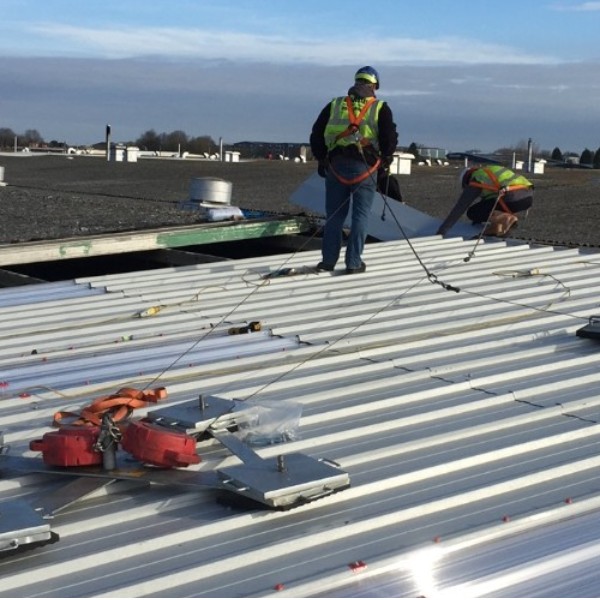
December 21, 2023
As a commercial roofing company operating in the UK, we at Dura Steel Roofing Services know all too well the impacts that weather can have on roof performance and lifespan. From extreme heat to heavy rain and snow, the elements constantly test the limits of commercial roofing materials. In this blog post, we'll discuss how different weather conditions affect commercial roofs and what steps facilities managers can take to maximise roof resilience no matter the forecast.
Prolonged periods of hot weather can be hugely damaging to commercial roofing systems. Sustained high temperatures cause roofing membranes and coverings to soften and expand, creating gaps where water can infiltrate on cooler days. Hot weather also accelerates the ageing and weathering of materials. To prepare roofs for heatwaves, facilities managers should consider installing reflective membranes or coatings to reduce surface temperature. Ensuring adequate insulation above the roof deck will also help to minimise heat transfer into buildings.
When it rains heavily for prolonged periods, roof drainage systems can struggle to cope. Any vulnerabilities in the roof covering will quickly lead to internal leaks and damage. Prior to the autumn and winter storm season, facilities managers should thoroughly inspect roof drainage and clear any debris from gutters and downpipes. Installing overflow drainage systems is also advisable to deal with extreme rainfall events. It's also important to repair any failed seals, tears in membrane roofing or missing roof tiles that could allow water ingress.
Low temperatures and snowfall create several challenges for commercial roofs. Snow sitting on roofs can impose extremely heavy loads, which can cause structural failure if roof frames are not designed accordingly. Melting snow also refreezes as it runs off the roof, creating dangerous ice dams along the roof edge and gutters. This trapped water often works its way backwards under roofing materials when it melts, causing leaks. Regularly clearing snow from roofs reduces loading. Installing electric heat trace cables along the roof perimeter can also help to melt ice dams where they form.
It's clear that UK weather conditions can truly test commercial roofing materials to their limits. But by being proactive and putting resilience measures in place, facilities managers can keep roofs watertight and minimise whole-life costs regardless of whatever the British weather decides to throw at us!
If you need advice tailoring your commercial roof to cope with weather extremes, Dura Steel Roofing offers comprehensive roof surveys and maintenance planning. Our decades of experience with specification, installation and repair of metal roofing systems allow us to provide solutions to improve resilience while maximising long term value.